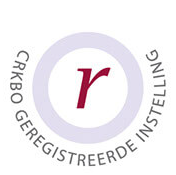
UV keratitis is the result of acute high-dose or suprathreshold UV radiation. It can cause severe ocular pain, tearing, conjunctival chemosis, blepharospasm and deterioration of vision. The onset is typically several hours after exposure. UV keratitis can be prevented by minimizing radiation exposure (e.g. wearing a hat, sunglasses, UV-blocking contact lenses). Depending on the degree of UV damage, all symptoms usually resolve within 24-72 hours due to the fast reepithelialization of the cornea. Permanent damage is extremely rare. UV keratitis is managed by avoiding further exposure to UV radiation. Lubrication and a bandage contact lens can be used to reduce the symptoms and gain faster recovery. The use of topical anesthetics should be avoided if possible, since they delay and prevent corneal reepithelialization.
Did you know that:
- Direct sunlight only contributes for 50% of the ambient UV radiation. Other important factors are scatter and reflection.
- UV radiation increases with altitude at a rate of around 4% per 300 meters as a result of decreased atmospheric absorption.
- Lower solar angles increase direct and reflected sunlight to the eye. Therefore, the radiation burden on the eye can be twice as high in the morning compared with noon (so keep in mind that the UV burden on the eye might peak at hours different to the skin!).
- Individual predisposition factors such as orbital anatomy, corneal thickness, and pupil size also determine the overall UV burden to the eye. Further, photosensitizing drugs (tetracyclines or chloroquine) may increase the susceptibility to UVR damage.
- Less than two hours of UV radiation reflected from snow has been reported to be enough to cause UV keratitis.
Read the full article here.
Reference
Willmann G. Ultraviolet Keratitis: From the Pathophysiological Basis to Prevention and Clinical Management. High Alt Med Biol. 2015;16(4):277-82. doi: 10.1089/ham.2015.0109.




